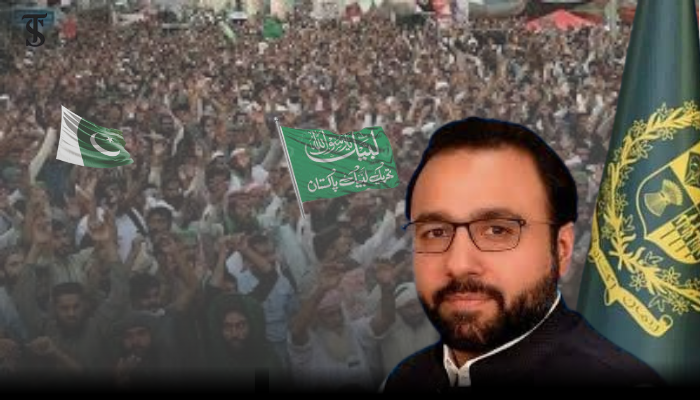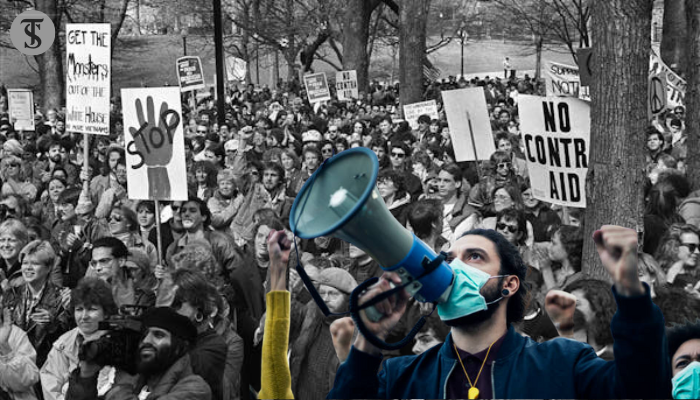Sectarianism in Pakistan: A Persistent Threat to National Unity

- Historical and Political Roots: Sectarianism in Pakistan has deep historical roots, exacerbated by colonial policies, the Iranian Revolution, the Saudi-Iran rivalry, and internal political instability, leading to the rise of extremist groups and deepening sectarian divides.
- Socioeconomic and External Factors: Poverty, illiteracy, and social inequalities, combined with foreign influences like proxy funding from Iran and Saudi Arabia, have intensified sectarian tensions, fueling violence and societal fragmentation.
- Need for Comprehensive Action: Countering sectarian violence requires robust law enforcement, judicial reforms, consistent implementation of policies like the National Action Plan, education reforms promoting interfaith harmony, and long-term efforts to address the ideological and socioeconomic causes.
In the contemporary world, the nature of conflict has evolved significantly from the total wars that dominated the 20th century. Instead of large-scale international wars, the focus has shifted to internal disputes. Civil wars, guerrilla conflicts, and terrorism have replaced traditional wars, often stemming from deep-seated sectarian divisions. Sectarianism, a complex and multifaceted phenomenon, plays a significant role in shaping these conflicts. Though challenging to define, sectarianism in Pakistan, however, generally refers to divisions in society based on religious or sectarian lines, where identities like Sunni and Shi’a become defining markers. These divisions range from cultural and social differences to bias, segregation, and outright violence.
Importantly, sectarianism is not an inherent human condition but a product of historical, political, and social factors that have been exploited for power and marginalization. This dynamic phenomenon frequently intersects with broader issues such as ethnicity, class, and nationality, further complicating its scope. In many cases, its impact is underestimated or misunderstood, particularly by global powers that fail to grasp the nuances of sectarian relationships within nations. In some instances, colonial legacies have exacerbated sectarian divides, creating conditions ripe for conflict.
While religion is often blamed as the root cause of sectarian violence, other critical factors contribute to fostering environments conducive to such conflicts. Political opportunism, socioeconomic inequalities, and external influences have played pivotal roles in deepening sectarian tensions. Pakistan is a prime example of a country grappling with the ramifications of sectarian divides, particularly between Sunni and Shi’a Muslims. Over the years, sectarian violence in Pakistan has intensified, fueled by political instability, regional dynamics, and rising religious extremism. Major cities like Karachi, Quetta, and Gilgit-Baltistan have been frequent sites of targeted killings, bombings, and attacks on religious gatherings, posing significant challenges to national security and unity.
The roots of sectarian strife in Pakistan can be traced back to the colonial era when British policies often reinforced religious divisions to maintain control. After gaining independence in 1947, Pakistan initially embraced religious diversity. However, political instability and sectarian tensions within Islam gradually led to societal rifts. The Iranian Revolution of 1979 and the subsequent Saudi-Iranian rivalry further exacerbated sectarian divides in Pakistan. Both countries funneled financial support into Pakistani religious institutions to propagate their ideologies, escalating sectarian tensions.
The Islamization policies introduced during General Zia-ul-Haq’s regime in the late 1970s and 1980s further deepened these divisions. During this period, extremist groups such as Sipah-e-Sahaba Pakistan (SSP) and Tehrik-e-Jafaria Pakistan (TJP) emerged, fueling violence and hostility. Socioeconomic challenges, including poverty, unemployment, and illiteracy, have also contributed to the rise of extremism. Marginalized communities, particularly Shi’a Hazaras and Christians, have been frequent targets of sectarian violence, highlighting the vulnerabilities of minority groups.
Recent incidents underscore the persistence and severity of sectarian violence in Pakistan. In November 2024, clashes between Sunni and Shi’a tribes in the Kurram District of Khyber Pakhtunkhwa resulted in over 130 casualties, following the targeted killing of 52 Shi’a passengers. Similarly, the January 2023 attack on a mosque in Peshawar claimed the lives of 130 individuals and injured 169 others. These events highlight the deep-rooted sectarian divides and the ongoing threat they pose to Pakistan’s stability.
Such violence is not solely a domestic issue but is influenced by external factors. Geopolitical rivalries, particularly between Iran and Saudi Arabia, have played a significant role in exacerbating sectarian tensions in Pakistan. Both nations have historically used Pakistan as a proxy battleground, funding religious seminaries to advance their respective ideologies. Internally, the exploitation of religious narratives and the dissemination of hate speech by extremist groups have further fueled divisions. Socioeconomic disparities and the marginalization of minority communities have created fertile ground for sectarian grievances to take root and flourish.
The Pakistani government has struggled to effectively address sectarian violence due to a combination of policy deficiencies, inadequate law enforcement, and judicial shortcomings. While the constitution guarantees religious freedom, in practice, the state has often failed to protect minority rights or ensure equal treatment for all citizens. Inconsistent state policies have further complicated efforts to counter extremism. While initiatives such as the National Action Plan (NAP) were introduced to combat terrorism and extremism, their implementation has been sporadic and ineffective.
Law enforcement agencies face significant challenges, including corruption, limited resources, and inadequate training, which hinder their ability to prevent and counter sectarian violence. The judiciary has also been criticized for delays in prosecuting offenders, often due to insufficient evidence or political pressures. Political parties have occasionally aligned with or tolerated sectarian groups for electoral gains, undermining efforts to neutralize extremist forces. These inconsistencies in governance have allowed extremist ideologies to persist and grow.
To effectively combat sectarian violence, Pakistan must adopt a multifaceted and long-term approach. Reactive measures are insufficient; instead, proactive strategies must address the root causes of sectarianism. Educational reforms are crucial in this regard. The curriculum should be revised to promote interfaith harmony, critical thinking, and awareness about the dangers of sectarianism. Socioeconomic inequalities must also be addressed to reduce the sense of deprivation among marginalized communities. This includes creating economic opportunities, improving access to education, and fostering social cohesion.
The government must also take decisive action against extremist groups and their networks. This involves not only cracking down on hate speech and propaganda but also reforming religious seminaries to promote tolerance and moderation. International cooperation is essential to counter the external factors contributing to sectarian violence. Engaging with regional powers like Iran and Saudi Arabia to reduce their influence on Pakistan’s sectarian dynamics is critical. At the same time, fostering dialogue and understanding among different sects within the country can help build trust and reduce tensions.
Sectarian violence remains one of the most pressing challenges to Pakistan’s national security and integration. Deeply rooted in historical grievances, foreign influence, and socioeconomic disparities, it continues to undermine the country’s stability. Recent incidents, such as the clashes in the Kurram District and the Peshawar mosque attack, highlight the urgency of addressing this issue. While initiatives like the National Action Plan represent a step in the right direction, their inconsistent implementation has limited their effectiveness.
A comprehensive and sustained effort is needed to combat sectarianism in Pakistan. This includes strengthening institutions, enforcing laws, and addressing the ideological and socioeconomic factors that fuel violence. Educational reforms, interfaith dialogue, and international cooperation are essential components of this strategy. By prioritizing these measures, Pakistan can work towards fostering unity, ensuring security, and building a more inclusive and harmonious society.
The author is an enthusiastic writer and researcher in International Relations, currently undertaking an MPhil at the University of Sindh. Her research centers on Middle Eastern geopolitics, sectarian dynamics, and Pakistan's contributions to regional security.





